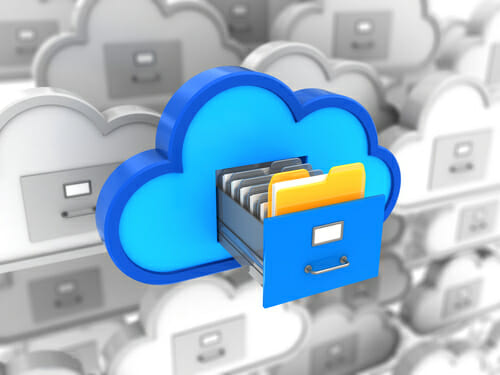 {Read in 7 minutes} I’ve been writing this blog for well over a year now and I have to say, it’s a really enjoyable part of my practice. It’s always wonderful when people with whom I haven’t spoken in a while — whether they be clients, colleagues, or referral sources — reach out to me and let me know that they appreciate an article that I’ve posted or a newsletter that I’ve sent.
{Read in 7 minutes} I’ve been writing this blog for well over a year now and I have to say, it’s a really enjoyable part of my practice. It’s always wonderful when people with whom I haven’t spoken in a while — whether they be clients, colleagues, or referral sources — reach out to me and let me know that they appreciate an article that I’ve posted or a newsletter that I’ve sent.
One of the very first articles that I ever wrote, back in 2016, is one that people say they get the most use out of, and that is dealing with Health Care Proxies. People generally like this topic because everyone is concerned about health care decision-making and people like that they can draft a Health Care Proxy without necessarily hiring an attorney and paying legal fees. The form is available on the New York State Department of Health website for free. Therefore, I thought it might be beneficial to take a more in-depth look.
Overview of Health Care Proxy
A Health Care Proxy is a document that one can sign appointing an Agent to make medical decisions for you should you ever lose the capacity to do so. If I sign a Health Care Proxy and name you as my Agent, I will continue to make all of my own medical decisions during my lifetime, so long as I can meaningfully communicate with my medical caregivers. However, if there comes a time when I cannot meaningfully communicate with them (whether it’s because I’m in a coma or I have lost the capacity to make my own medical decisions) you, as my Agent, now have the authority to make all medical decisions for me — decisions that can range from a simple dental surgery right up to an ultimate “pull the plug” type of decision. Clients will often sign a Health Care Proxy in conjunction with a Living Will and other advanced directives such as a Power of Attorney (which deals with financial decisions as opposed to health care decisions).
OK, I have a Health Care Proxy. Now what?
Hopefully by now, several of you have signed a Health Care Proxy. So now comes the question, what do you do with it?
Like many legal documents, a Health Care Proxy is not something that will do anyone any good if it is locked away in a drawer or a filing cabinet, its existence a secret to everyone but yourself. Ideally, the person who initiates the Health Care Proxy should share the document with, at a bare minimum, the parties or people he/she has chosen to make medical decisions for them. For example, if I were to sign a Health Care Proxy appointing my adult son as the Primary Agent, and my sister as the Alternate Agent, it is essential that both of them have copies of the document so that they can use it, if necessary. Unlike certain documents like Wills, where it’s important to keep track of the original documents, no one will ever ask you to produce an original Health Care Proxy. Copies are more than sufficient.
Besides the Primary Agent and the Alternate Agent named in the document, who else is it helpful to give a copy of the Health Care Proxy to? Generally, I like giving clients additional copies for the following purposes:
Primary Care Physician — I always tell my clients to take a copy and give it to their primary care physician. If there is any doctor that they see on a regular basis, especially one treating a chronic illness, it’s not a bad idea for that doctor to also have a copy. If you are not sure what constitutes a “regular basis” err on the side of giving that doctor a copy of the Health Care Proxy anyway.
Why do I think this is important?
It’s important because people rarely show up at the hospital with legal documents in-hand. Think about it. If I’m run over by a bicycle messenger in midtown Manhattan tomorrow, when the paramedics finally scrape me off the sidewalk and I get to the emergency room one of the things that they’re going to do is dig through my wallet. They’re going to be looking for (hopefully, just) my identification card so they know who they are treating. But they’re also going to look for my health insurance card so they get paid. Once they have my health insurance card, they will know who my primary care physician is and will likely contact my doctor to learn whether or not I’m on any medications, have any medical allergies, or other things of that nature. If my primary care physician has my Health Care Proxy on file, they can easily send it over to the emergency room.
Keep a copy for yourself — Don’t give away every last copy! In a situation where you are going to the hospital and you’re conscious, whether it be an emergency or an outpatient surgery where you’re walking in the front door unassisted, it’s always good to bring a copy of the Health Care Proxy with you to ensure that your medical care providers will know whom to contact should you become unable to meaningfully communicate with them.
Keep a copy on the refrigerator — This is where paramedics are trained to look for emergency contact information and legal documents. However, you also may not want to look at your Health Care Proxy every day as you go to get the milk out of the fridge to pour over your cornflakes in the morning. But placing an emergency contact list there is not a bad idea, particularly if that list denotes who has possession of a Health Care Proxy (Agent, doctor, attorney, etc.).
On Your Smartphone — Speaking of emergency responders and medical staff, it is also a very good idea if you have a smartphone (meaning anybody) that you set up some sort of emergency alert on your phone.
Think about it. Most people have been carrying cellphones in their everyday life for at least the last 20 years. In those first few years, we were all told that we should create a contact in our address book called ICE (In Case of Emergency) which emergency responders would look for when treating us.
That probably worked well in the days of simple flip phones. However, when you’re dealing with phones today that require passwords, thumbprints, or facial recognition to unlock, no one is going to be able to get into your phone to find that emergency contact information. Therefore, it’s a good idea to take advantage of the various apps available on both iOS and Android devices to set up an emergency contact:
– Apple has Medical ID as part of their Health App. You can set up Medical ID by following the instructions here.
– Android users (7.0 and higher) can download the Medical ID app, and follow the instructions here.
For both types of devices, users can enable an emergency contact which paramedics and emergency room staff will be able to retrieve without unlocking your telephone. It can be a real lifesaver.
In the Cloud — If you use programs like Dropbox or Google Drive, these can be a great way to have access to your legal documents wherever you go. If an emergency arises, you can literally send your documents to the hospital while you’re in the ambulance riding there. If you have a shared cloud account with your spouse, children, or other family members – even better!
So as you can see, in addition to the legal requirements for signing a Health Care Proxy that I described in my prior article, there are some practical concerns. My previous article describes what you need to do to execute a Health Care Proxy, but keep the contents of this article in mind as a reminder of what to do with it and who gets copies.
For more information on this topic, please contact me at (212) 495-0317 or by clicking here.

